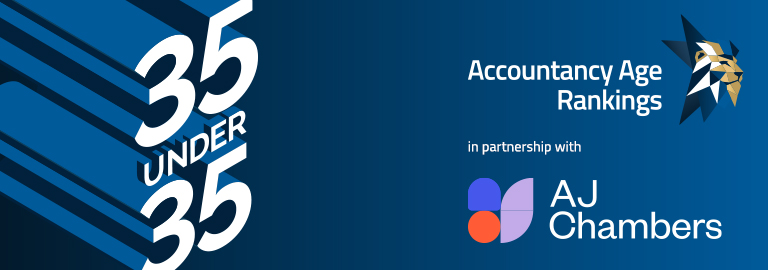
Making Tax Difficult: MPs raise concerns about HMRC
The successful implementation of MTD depends on the government's ability to address the concerns raised by stakeholders and provide a transparent and customer-centric approach
In recent years, the UK government has been implementing the Making Tax Digital (MTD) program, aiming to modernize the tax system and make it more efficient. However, there have been concerns about the impact of these changes on small businesses and taxpayers. This article explores the recent developments and changes in the MTD legislation and their implications for small businesses. We will delve into the details of the legislation, discuss the exemptions and reporting changes, and address the concerns raised by stakeholders.
Background of MTD
The MTD program was first introduced by the UK government in an effort to streamline the tax administration process and encourage digital record keeping and reporting. The program requires businesses and self-employed individuals to maintain digital records of their income and expenses and submit their tax returns online. The goal is to simplify the tax process, reduce errors, and improve efficiency.
Implementation Phases of MTD
The implementation of MTD has been divided into several phases. Initially, it was planned to roll out MTD for income tax self-assessment (MTD ITSA) for all taxpayers. However, recent developments have brought changes to the original plans.
Exemption for Low-Income Taxpayers
One significant change is the exemption for low-income taxpayers. The UK government has confirmed that individuals earning under £30,000 will not be brought into MTD ITSA for the time being. This decision is a response to concerns raised by professional bodies and other stakeholders regarding the potential burden and costs of digital record keeping for individuals on low incomes.
It is important to note that the £30,000 threshold applies to the gross total self-employment and property income. However, actual profits may be much lower in practice, which means that some individuals may still face challenges in complying with MTD requirements.
While the exemption for low-income taxpayers is a sensible measure, the government has stated that the threshold will be kept under review. This suggests that there is a possibility of revising the threshold in the future, which small businesses and taxpayers should keep an eye on.
Changes in Reporting Requirements
Another important aspect of the recent changes to MTD legislation is the modification of reporting requirements. The original proposal included a separate End of Period Statement (EOPS) to report taxable profits or losses for each trade or property business, followed by a Final Declaration that consolidated all the necessary information for the final tax calculation.
However, HM Revenue and Customs (HMRC) has listened to the concerns raised by taxpayers and stakeholders and decided to integrate the EOPS into the Final Declaration process. This means that taxpayers will no longer have to file a separate EOPS. Instead, the reporting will be streamlined, making it easier for taxpayers to comply with MTD requirements.
Additionally, quarterly updates will now be cumulative, allowing taxpayers to correct any errors or make amendments in their subsequent quarterly updates. This change is a response to requests from professional bodies and stakeholders, who have been advocating for easier amendment processes to reduce administrative burdens.
Exemptions for Foster Carers and Individuals without National Insurance Numbers
In recognition of the unique circumstances faced by certain groups, the government has also introduced exemptions for foster carers and individuals without National Insurance Numbers (NINO). These individuals will be exempted from the digital record-keeping requirements of MTD.
The exemption for foster carers is a practical move, as it would have been burdensome for them to maintain digital records considering their specific responsibilities. Similarly, individuals without NINO, who may face challenges in interacting with MTD, will also be exempted from the digital record-keeping requirements.
Resources & Whitepapers
Accounting Software The power of customisation in accounting systems
Concerns raised by the Public Accounts Committee (PAC)
While the recent changes to the MTD legislation address some of the concerns raised by stakeholders, there have been ongoing criticisms and challenges surrounding the program. The Public Accounts Committee (PAC) conducted a review and raised several issues in a report published recently.
Lack of customer-centric approach
The PAC report highlights that HMRC has lost sight of the need to prioritize customers and their requirements in the implementation of MTD. The committee argues that while the program aims to make the tax system easier for individuals, it has instead increased the burdens imposed on some taxpayers.
The design of MTD has been criticized for not taking into account the realities faced by business taxpayers and agents. While HMRC stands to benefit from improved systems through MTD, taxpayers are being asked to bear the additional costs and requirements. Self Assessment taxpayers, for instance, are now expected to pay for third-party software and file tax returns quarterly, resulting in increased burdens and expenses.
Lack of transparency on costs
Another major concern raised by the PAC report is the lack of transparency on costs imposed on taxpayers. The report reveals that HMRC excluded over £2 billion in upfront transitional costs for customers from its business cases for MTD. This omission raises questions about the accuracy and reliability of the cost projections provided by HMRC.
The report estimates that business taxpayers could potentially face more than £1.9 billion in compliance costs over the first five years of MTD implementation. However, HMRC has not provided a clear breakdown of which customers will bear the highest transitional costs. The PAC emphasizes the importance of transparency in disclosing the costs and benefits to the public and customers of MTD.
Failures in planning and delivery
The PAC report also highlights widespread and repeated failures in HMRC’s planning, design, and delivery of MTD. These failures have led to increased costs and numerous delays in the program. The original estimate for the cost of introducing MTD for VAT and Self Assessment was £222 million in 2016. However, the current estimate has escalated to £1.3 billion, representing a 400% increase in real terms.
The PAC expresses concerns about HMRC’s track record of delays and lack of conviction in meeting the latest timetable for MTD. This lack of confidence raises doubts about the successful and timely implementation of the remaining phases of MTD.
What next?
The recent changes to the MTD legislation, including the exemption for low-income taxpayers and the modifications in reporting requirements, address some of the concerns raised by stakeholders. However, the PAC report highlights ongoing issues related to transparency, customer-centric approach, and failures in planning and delivery.
Small businesses and taxpayers must stay informed about the evolving MTD landscape and future changes. It is essential to monitor updates from HMRC and seek professional advice to ensure compliance with the requirements of MTD. The successful implementation of MTD depends on the government’s ability to address the concerns raised by stakeholders and provide a transparent and customer-centric approach to tax administration.

